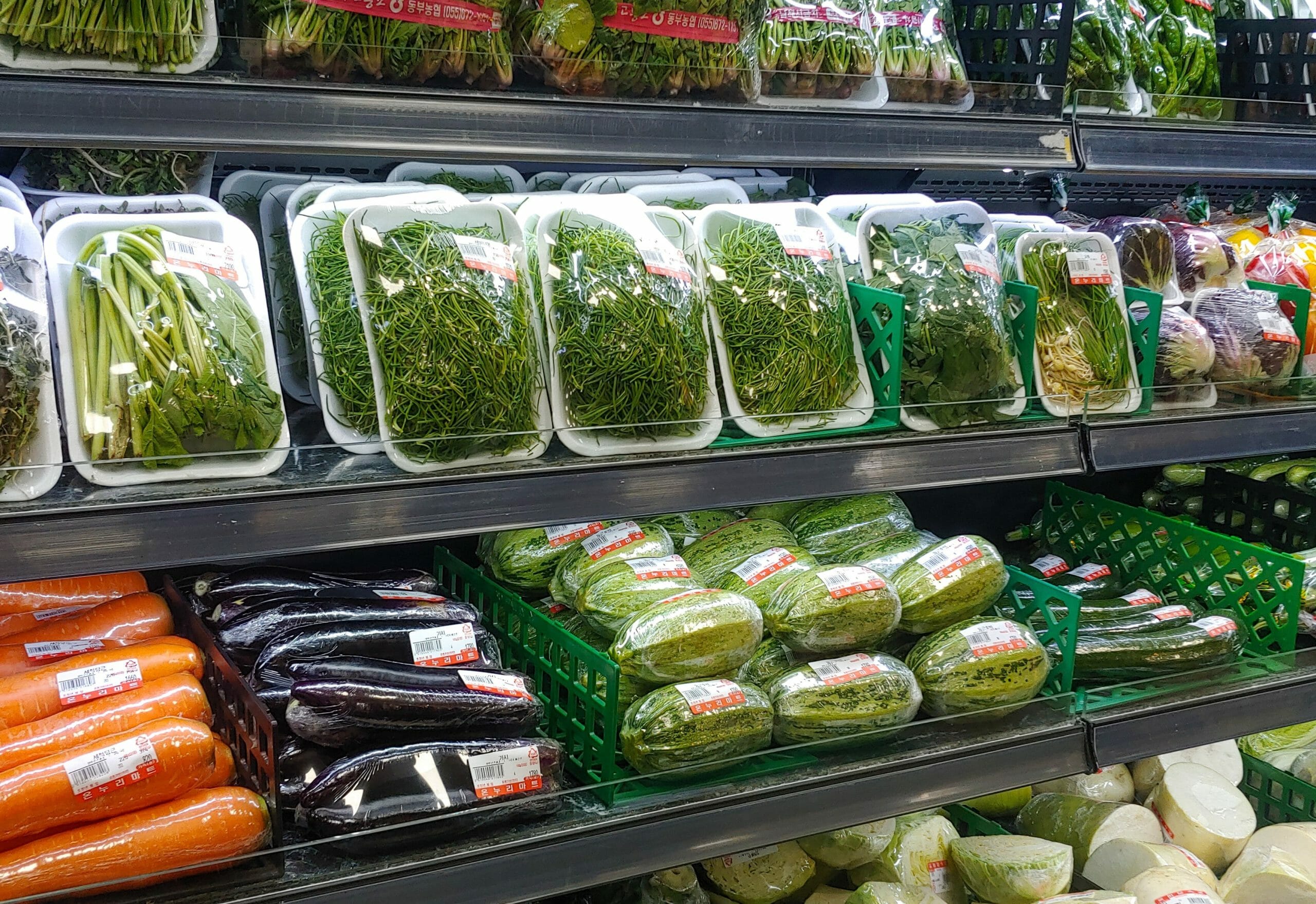HUMIDITY CONTROL DOESN’T HAVE TO BE DIFFICULT.
FIND YOUR PROBLEM. SEE THE SOLUTION.
Six common grocery store microclimates and the related humidity issues.
General Ambient Environment
This is the non-perishable area, and generally the largest part of any store, making up roughly 75% of total square footage.
- Stores, especially those that are part of a chain, are relatively cookie cutter. This means they’re not customized for different climates (Southeast vs. Pacific Northwest) or to handle special areas, such as prep rooms.
- Thermostats generally are located here. That means no specific controls over problem areas like coolers.
- High energy costs to fight humidity issues if you use standard AC units
- Use roof top air conditioners to manage sensible conditions (temperature).
- Add a DOAS (decoupled, overhead dehumidifiers) to satisfy ventilation requirements.
- Incorporate DOAS to address latent conditions (humidity).
Shop-In Coolers
Large coolers that allow customers to easily enter and exit. They’re often used for produce, milk and eggs. These coolers use air curtains to reduce outside air from entering the environment. It’s far from perfect.
- Fog on glass
- Condensation
- Wet floors
- Frost on product
- Slips and falls
- Lowering the ambient store dew point can help. Dehumidifiers can assist with this.
- Create an air curtain effect with desiccated air washing over the display glass.
Frozen Goods + Freezer Section
Depending on the store, often a mix of coffin coolers and sealed coolers with glass doors.
- Coffin coolers are prone to developing hoar frost, which creates a customer experience and quality perception issue.
- Glass doors develop fog and frost, making it difficult or impossible to see product.
- Energy inefficiency. Fighting these humidity-related issues with existing air handlers is costly and doesn’t work well.
- Lowering the ambient dewpoint can reduce the amount of frost on freezer walls and glass. It also may reduce/eliminate the need for desiccant dehumidifiers.
- Overhead refrigerant dehumidifiers are the most efficient and effective way to lower the ambient dewpoint.
- Create an air curtain effect with desiccated air washing over the display glass.
Prep Rooms
Any room where food is prepared in house. Most often in the meat and bakery departments.
- Lingering moisture from cleanup leads to sanitation issues and FDA violations.
- Slips and falls.
- Potential to produce humidity and heat unaccounted for in building design (only applicable when food is cooked. I.e., in-store restaurants).
- Wasted energy costs from fighting humidity with standard AC.
- Humidity issues in produce and butcher prep rooms, which typically maintain a temperature less than 60 F, because semi-refrigerated, ACs aren’t set low enough.
- Small refrigeration dehumidifiers placed where food is cooked to reduce humidity from infiltrating the store.
- Portable dehumidifiers to remove excess humidity after washdown cycles.
Beer Coolers + Walk-in Coolers
Different from shop-in coolers because they have doors “sealing” them, rather than using air curtains.
- Customer entry/exit adds uncontrolled humidity and temperature load to the entire store.
- Glass fogging
- Condensation
- Wet floors
- Slips and falls
- Lowering the ambient dewpoint will reduce or eliminate the need for dehumidifiers.
- Create an air curtain effect with desiccated air washing over the display glass.
Backroom Storage
A mix of cold and regular storage for excess and/or incoming inventory.
- Black mold.
- Not customer facing, therefore not nearly as controlled. But, the backroom environment can impact the rest of the store.
- Air flow is difficult to predict and manage because of variety of products stored.
- Dedicated dehumidification to lower the dewpoint.
- Portable equipment for seasonal humidity spikes.
A new look at
Humidity Control for Grocers
LET HVAC BE HVAC
Using your HVAC system to manage humidity is inefficient and, frankly, doesn’t work that well. Using reheat is archaic and far from perfect.
DIAL IN THE DOAS
In a world where ventilation is top of mind, a dedicated outdoor air system (DOAS) will move mass amounts of air, letting your HVAC focus 100% on recirculation. That means more efficiencies.
ADD DECOUPLED DEHUMIDIFIERS
Adding in refrigerant dehumidifiers allow for precise environmental controls, critical for large retailers needing to eliminate everything from hoar frost to slips and falls in shop-in coolers, or the uncomfortably cold temperatures from overuse of air conditioning.



